
May Day is a European festival of ancient origins marking the beginning of summer, usually celebrated on 1 May, around halfway between the Northern Hemisphere's Spring equinox and June solstice. Festivities may also be held the night before, known as May Eve. Traditions often include gathering wildflowers and green branches, weaving floral garlands, crowning a May Queen, and setting up a Maypole, May Tree or May Bush, around which people dance and sing. Bonfires are also a major part of the festival in some regions. Regional varieties and related traditions include Walpurgis Night in central and northern Europe, the Gaelic festival Beltane, the Welsh festival Calan Mai, and May devotions to the Blessed Virgin Mary. It has also been associated with the ancient Roman festival Floralia.

A maypole is a tall wooden pole erected as a part of various European folk festivals, around which a maypole dance often takes place.

Midsummer is a celebration of the season of summer, taking place on or near the date of the summer solstice in the Northern Hemisphere; the longest day of the year. The name "midsummer" mainly refers to summer solstice festivals of European origin. In these cultures it is traditionally regarded as the middle of summer, with the season beginning on May Day. Although the summer solstice falls on 20, 21 or 22 June in the Northern Hemisphere, it was traditionally reckoned to fall on 23–24 June in much of Europe. These dates were Christianized as Saint John's Eve and Saint John's Day. It is usually celebrated with outdoor gatherings that include bonfires and feasting.

In the British Isles and parts of the Commonwealth, the May Queen or Queen of May is a personification of the May Day holiday of 1 May, and of springtime and the coming growing season. The May Queen is a girl who rides or walks at the front of a parade for May Day celebrations. She wears a white gown to symbolise purity and usually a tiara or crown. Her duty is to begin the May Day celebrations. She is generally crowned by flowers and makes a speech before the dancing begins. Certain age-groups dance around a Maypole celebrating youth and springtime.

Culture of Nicaragua is a fusion of Mesoamerican, Chibcha, and Spanish influence. The western part was colonized by the Spanish and its culture is similar to western El Salvador in that western Nicaragua was dominated by the Nahua people, specifically the Nicarao, a branch of the Pipil people. Nahua heritage can still be seen in Nicaraguan culture especially in its cuisines, the etymologies of many of its place names, and even DNA analysis. While western Nicaragua is mostly Indigenous of Nahua or Oto-manguean origin, eastern Nicaragua is mostly of Chibcha, Miskito, and African origin.

Calan Mai or Calan Haf, also historically called Cyntefin, is the Welsh celebration of May Day. It marks the beginning of summer and traditionally it involved festivities around bonfires, maypoles, and carol singing. Some of its traditions parallel the Gaelic May Day festival Beltane, and other May Day and Walpurgis Night traditions in Europe.
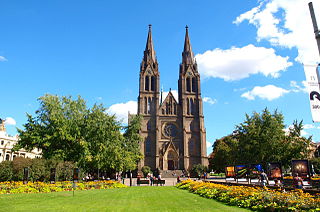
Vinohrady is a cadastral district in Prague. It is so named because the area was once covered in vineyards dating from the 14th century. Vinohrady lies in the municipal and administrative districts of Prague 2, Prague 3 and Prague 10, little parts also of Prague 1 and Prague 4.

Staré Město is a town in Uherské Hradiště District in the Zlín Region of the Czech Republic. It has about 6,600 inhabitants.
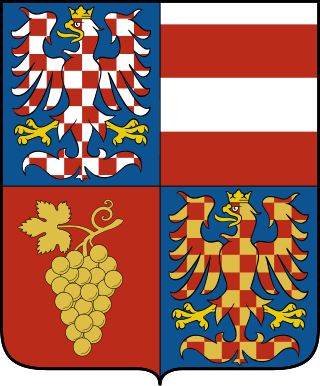
Wine in the Czech Republic is produced mainly in southern Moravia, although a few vineyards are located in Bohemia. However, Moravia accounts for around 96% of the country's vineyards, which is why Czech wine is more often referred to as Moravian wine. Production centers on local grape varieties, but there has been an increase in the production of established international strains such as Cabernet Sauvignon.

Ickwell May Day is an annual celebration held in the village of Ickwell, Bedfordshire. The event is a celebration of May Day, a festival marking the beginning of summer, and has been celebrated from at least 1651. The festival includes elements of traditional English culture, such as morris and maypole dancing. Ickwell is unusual in having a permanent maypole, located on the village green, as well as including adult dancers in its maypole dancing.
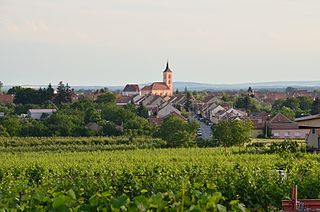
Velké Bílovice is a town in Břeclav District in the South Moravian Region of the Czech Republic. It has about 3,900 inhabitants. It is known for viticulture.

Moravian traditional music or Moravian folk music represents a part of the European musical culture connected with the Moravian region of the Czech Republic. Styles of Moravian traditional music vary by location and subject, but much of it is characterized by a specific melodic and harmonic texture related to the Eastern European musical world. According to Czech musicologist Jiří Plocek, Moravia is the area where the European East musically meets the West.
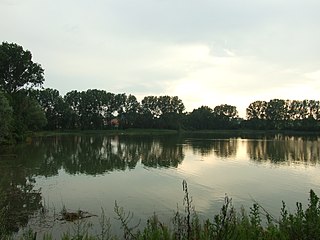
Chýně is a town in Prague-West District in the Central Bohemian Region of the Czech Republic. It has about 4,800 inhabitants. The town is a suburb of Prague.

Nová Ves u Nového Města na Moravě is a municipality and village in Žďár nad Sázavou District in the Vysočina Region of the Czech Republic. It has about 700 inhabitants.

Postal codes in the Czech Republic are called PSČ. The acronym is commonly pronounced as a word, rather than separate letters. The system was introduced in former Czechoslovakia in 1973 and has remained unchanged. The postal code consists of five digits, usually written with a space in the form XXX XX. The first digit indicates a region :
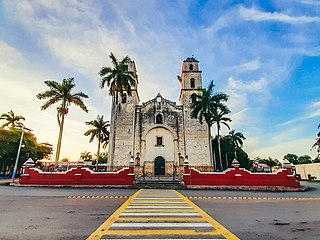
Espita is a town in Espita Municipality, Yucatán (Mexico) located on the Litoral Oriente or Region I of Yucatan. It has an average height of 27 meters and is located at a distance of 165 km from the Merida City, 80 km from Izamal, 58 km from Chichen Itza, 49 km from Valladolid, 35 km from Ekʼ Balam and 27 km from Tizimín.
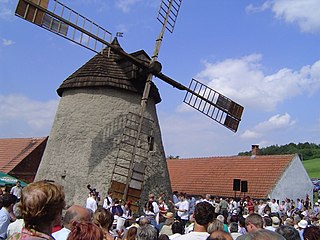
Horňácko is an ethnographic microregion situated in the Hodonín District, South Eastern Moravia, Czech Republic. The region is home to approximately 10,000 people. It is significant for its traditional folk culture, especially the folk music. The region hosts annually the Horňácko Folk Festival.
The Kundum festival is celebrated by the Ahanta and Nzema people of the Western region of Ghana. It is celebrated to thank God for the abundance of food at the time of the harvest period of the area.

Czech folklore is the folk tradition which has developed among the Czech people over a number of centuries. Czech folklore was influenced by a mix of Christian and pagan customs. Nowadays it is preserved and kept alive by various folklore ensembles uniting members of all ages, from children to seniors, showing their talent during competitions, folklore festivals or other performances.

Slavic carnivals are known under different names in various Slavic countries: Bulgarian: Сирни заговезни, Прошка, Поклади, romanized: Sirni zagovezni, Proshka, Pokladi; Macedonian: Прочка, romanized: Pročka; Russian: Масленица, Мясопуст, romanized: Maslenitsa, Myasopust; Polish: Ostatki, Mięsopust, Zapusty; Czech: Masopust, Šibřinky, Ostatky; Slovak: Fašiangy; Slovene: Mesopȗst, Pust, Pustni teden, Fašnk; Serbian: Покладе, Проћка / Poklade, Proćka; Croatian: Pust, Poklade, Mesopust, Fašnik. They are traditional Slavic festivals related to the period of carnival.



















